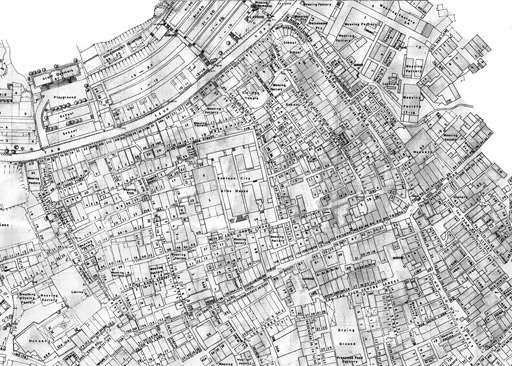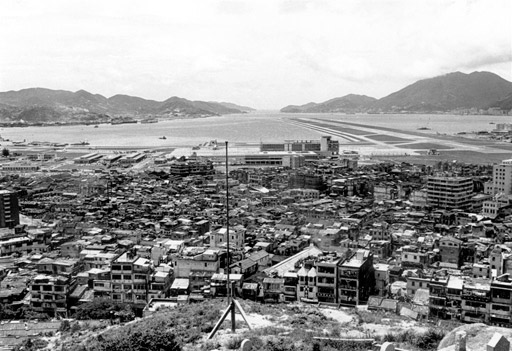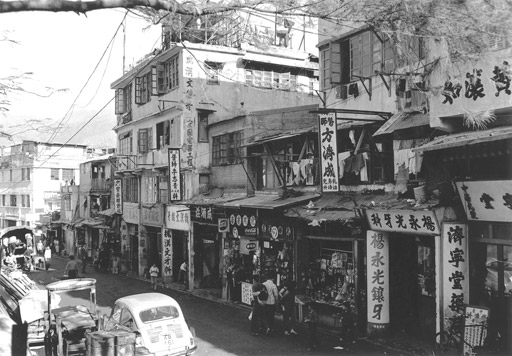BUILDING BOOM

By 1961, as the map of that year above indicates, the ground floor area of the Walled City was fast reaching saturation point. There were a few open spaces, but the agglomeration of buildings into tight clusters separated by narrow alleys (the latter already settling into the recognisable street layout of the City’s final years) was now firmly established. By this time, most of the buildings had risen to three or four storeys in height, matching those in the surrounding Sai Tua Tsuen squatter settlement, but demand for accommodation within the City’s confines continued to grow.
There had been so-called developers operating in the City from the beginning of the 1950s, usually small private contractors who would enter into an agreement with an established building owner to redevelop their one- or two-storey dwelling into something taller, larger and generally better built. The original owner would take possession of the same number of floors he had had before, while the contractor sold off the extra floors for a quick profit.
It was a model that proved remarkably successful and by the end of the 1950s nearly all of the City’s buildings had been redeveloped in this way. In the early years, most builders had been cautious not to overstep a line beyond which the Hong Kong authorities might be forced to act. The City’s ‘special’ status had by then been firmly established, but just how far the residents, both law-abiding and otherwise, might be able to go had never been made clear. It was a constant game of cat and mouse, with those living and working there constantly pushing the boundaries to see what they could get away with.
By the end of the 1950s and into the early 1960s, how much they could get away with was clearly quite a lot. As the 1962 photograph below indicates, taken from the hill to the north of the City, there were already several buildings straying up to five storeys and beyond, but the real breakthrough came the following year, as the Hong Kong Standard of 11th January 1963 reported under the headline ‘Big Building Boom Is On’, when a few brave individuals decided to build much higher.

The Hong Kong Standard article noted: “The Walled City of Kowloon is having a face-lift and private developers are busily pulling down old single-storeyed buildings and putting up new ones – most of them nine-storeys high. The redevelopment of real estate in the six-acre rectangular piece of land is booming. It is a striking contrast to the slackening of building industry in the rest of Hong Kong. Trade sources say that no less than a dozen sites are now being redeveloped by a handful of small-scale private contractors who know the place well. But flats in the newly reconstructed buildings are not cheap. They are selling at about $10,000 per flat with an internal area of around 200 square feet.”
And by all accounts the buildings were well appointed, the Standard’s report continuing: “The new buildings are equipped with modern facilities like water closets and running water … Electrical and telephone services are also available … The master-mind of all the buildings is a skilled worker. He is paid $600 a month and is in charge of all operations. ‘These buildings are safe, as all pillars are built with reinforced concrete,’ one master-mind says, ‘and the floors are four inches thick of reinforced concrete, a standard for tenements in new buildings throughout Hong Kong,’ he adds.”
As more and more buildings were completed over the next couple of years, without a response of any kind from the authorities, the floodgates opened and by 1968, when the photograph below was taken it is clear that nearly all the buildings had been redeveloped, not always to what seems to have become the nine-storey standard, but the inexorable rise of the City was clearly well under way.

Looking east along Tung Tau Tsuen Road in 1963.

The junction of Tung Tsing Road and Tung Tau Tsuen Road in 1968.